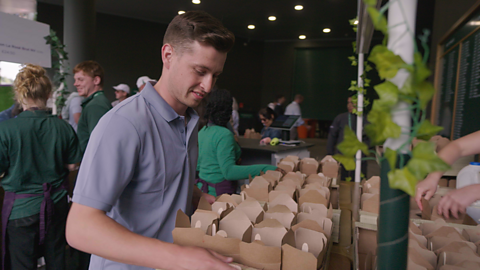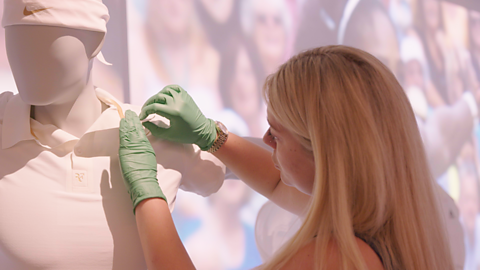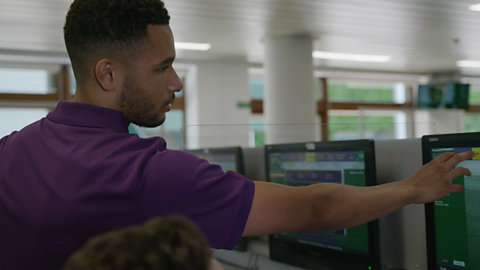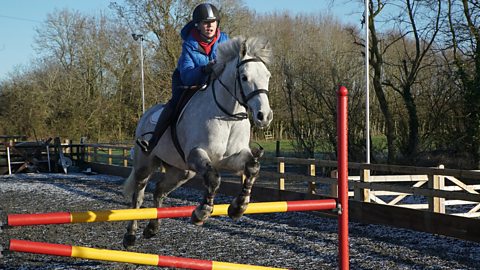
Young people will be familiar with jobs that they see people doing on TV or the internet, but this is only a small snapshot of the full range of possibilitiesãÎ
By Mark Anderson, Career Coach
Career options for students in sport
In this article for secondary teachers, Mark Anderson ã a careers education expert ã offers practical tips and activity suggestions for engaging students in a session about jobs in sport.
When young people are trying to decide on a career path to follow, they often start by thinking about jobs theyãve heard of. The problem with this strategy for any of us, but especially for young people, is that our knowledge of the broad range of possible jobs is very limited.
Young people will be familiar with jobs that:
- Their parents or other close adult contacts do
- Are visible roles that are carried out in their local community
- They see people doing on TV or the internet.
But this is only a small snapshot of the options. To make things more complex, thereãs a chance that the job they have in the future may not even exist yet. Therefore, a different way of thinking is required.
How to explore career opportunities in sports with your students
A more fruitful way of exploring careers is to start by considering the broad range of job sectors that exist. From there, you can start investigating the type of roles that exist within the sector and the skills required for them. Then itãs easier to see where you might fit in.
Having an understanding of job sectors is also useful even if a young person has an idea about what they want to do in the future. It can help them to not only keep their options open, but also to gain clarity about why theyãre interested in a particular role.
For example, if a student is keen on becoming a doctor it means that they will have a strong passion for improving the physical or mental health of individuals. However, there are many different jobs that involve helping to improve physical or mental health within the healthcare sector that may appeal or be more suitable.
When you think about large events, there are often several sectors that come together to make it happen. Take a large-scale sporting event such as Wimbledon, for example. Of course youãll see a range of people from the sports sector coming together during the fortnight. However, to create a memorable experience for spectators and to ensure the whole event goes smoothly, youãll also see workers from sectors such as IT, catering, construction, engineering and even frontline services.


Exploring job sectors with your class
An activity that I have found works well with a class is to arrange students into small groups and ask each group to come up with as many job roles as possible that go into running an event of their choice (for example, Wimbledon).
Give students five minutes for this task and see how many roles each group can came up with
Then watch this short film as a class to hear from young people who have been working at Wimbledon this year. Were any of these jobs suggested by students beforehand?
Introduce students to the idea of job families or job sectors by looking at the Bitesize Careers job sectors page. Then, in their groups, ask them to arrange the jobs they came up with into the correct sectors.
They should now be more familiar with the concept of job sectors, and can perhaps think of other jobs at Wimbledon and their relevant sector.


Types of employment at Wimbledon
Some students might wonder what the young people in the 'Working at Wimbledon' film do when theyãre not there. After all, there are still another 50 weeks of the year. This can naturally lead to a whole class discussion on the types of job that exist (e.g. full or part-time employees, contractors, freelancers, temporary employees).
You can find out more about the different types of employment .
Further classroom activities
To help your students get an idea of the wide range of job opportunities that exist within a particular industry, take a closer look at the media. One way of finding out how many people are involved in putting together a television production like Wimbledon for example (or any other TV programme) is to look at the closing credits at the end of a programme (students could pick a programme on telly or on the 91ààݘ iPlayer).
For a bit of competitive fun, you could show the closing credits of a Wimbledon programme on a large screen and ask the students to see how many job roles they can remember without writing them down. After the credits roll, give them a couple of minutes to write down as many jobs as they can remember and then see who has the most. Of course, it will help if you make a note of the job roles in advance of the lesson so you know theyãre not making up some jobs!
Whoever claims to have the most can read them out loud. This can be a small group or individual activity.


Searching for jobs at Wimbledon that appeal to them
As an additional activity, you could explore some roles within sports television further by looking at the 'jobs in the media and creative sector' section on Bitesize Careers.
Explain that there are a number of job roles in media that they will have never heard of. The same applies in all sectors. Therefore when investigating careers itãs important to explore the wide range of opportunities within sectors first and keep options open.
Itãs often the case that people start their career off in one role within a sector before progressing on to others. For example, many people start off in entry-level runner roles on TV sets before moving on to production roles with greater responsibility.
Next steps when starting a career in sport
Depending on computer access, ask students to individually investigate a sector that appeals to them, then look at some jobs within that sector to find roles that might suit them.
If they donãt have individual access to a computer at school, encourage students to research sectors further in their own time. This can even be the starting point for thinking about work experience opportunities in the future.
Make a note of sectors that appeal to your students. You could then use this as a guide to help you find volunteers from relevant sectors who are willing to come into the school to speak to students about their job.

Job inspiration: Roles in sport. collection
Hear from young people in a range of roles across the sports sector.

How can you use 91ààݘ Bitesize Careers in your classroom? video
Inspire your students about their futures with careers resources from Bitesize Careers.

91ààݘ Bitesize Careers. collection
Explore the 91ààݘ Bitesize careers page. Designed for your students with advice and inspiration from people who have found the right path for them.
